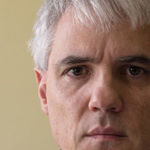 Adobe Community
Adobe Community
- Home
- Lightroom Classic
- Discussions
- Re: Time-lapse flickering due to shadow and highli...
- Re: Time-lapse flickering due to shadow and highli...
Copy link to clipboard
Copied
I'm confused...
Found a flicker in my time-lapse. I took a series of time-lapse shots at full manual settings with aperture open. I found that in some cases, two almost identical images with a difference in a second have differences if you apply the settings for the highlights and shadows. If you remove them, then there is no difference. And this happens in places, but in places it does not. I do not understand anything. Attached photos and settings files.
I really need advice. I just don't understand what the problem is and how to fix it.
I know that there are some smart settings that adjust for each frame in different ways like dehaze and clarity. But I never would have thought it was about shadows and highlights.
LRC v.10.2\CR v.13.2.
Also, I can not download even two RAV files due to limitations, so I made a link to the archive.
 1 Correct answer
1 Correct answer
The adaptability is an essential part of why Shadows and Highlights (and other similar features such as Dehaze and Clarity) are so much more effective than older methods such as Tone Curve, so the adaptability cannot be “turned off” — that would effectively defeat the feature itself. The adaptive adjustments were designed for individual still images, so they don’t make any attempt to smooth out what might happen if they were to be applied to a sequence.
The solution for time lapses is to prior
...Copy link to clipboard
Copied
Shadows and Highlights are both adaptive, depending on actual image content. You should probably try to avoid using them for time-lapse sequences.
Copy link to clipboard
Copied
Can this adaptability be disabled? After all, this is terribly inconvenient. How do I work with time-lapse highlights and shadows?
Copy link to clipboard
Copied
The adaptability is an essential part of why Shadows and Highlights (and other similar features such as Dehaze and Clarity) are so much more effective than older methods such as Tone Curve, so the adaptability cannot be “turned off” — that would effectively defeat the feature itself. The adaptive adjustments were designed for individual still images, so they don’t make any attempt to smooth out what might happen if they were to be applied to a sequence.
The solution for time lapses is to prioritize more traditional non-adaptive techniques, such as doing as much shadow and highlight adjustment as you can in the Tone Curve before using the adaptive adjustments. The Tone Curve, which goes back to the earliest versions of Photoshop, is simple, linear, and non-adaptive: Each pixel’s value is shifted by the value indicated by the curve for that tone level, regardless of image context. Not being able to adapt adjustments to image context limited the Tone Curve so much that new features like Shadows and Highlights had to be invented to provide better control without tedious manual masking. But there are still a few cases like time lapses where the Tone Curve is better than the newer features, so it’s a good thing Lightroom Classic keeps the Tone Curve around.
I use LRTimelapse with Lightroom Classic. One of the features of LRTimelapse is smoothing out inter-frame contrast flickering. But the developer of LRTimelapse does not advise relying on their anti-flicker feature to remove flicker from adaptive adjustments; instead he advises minimizing their use. That still means you can use adaptive adjustments, but first try to solve those problems using more traditional methods (e.g. Tone Curve), then add adaptive adjustments sparingly as a last resort.
Here is a very informative video on this subject from the LRTimelapse website:
Stop Lightroom from adding Contrast Flicker to your Timelapses
The video goes over which Develop module adjustments are adaptive, and which are not. That way you will know which adjustments you can focus on first for your heavy lifting, then keep the adaptive adjustments to a minimum so that any resulting contrast flicker is also kept to a minimum.
Copy link to clipboard
Copied
Another option: set an older Process Version.
Prior to 2012 Lightroom offered different tonal adjustments in the Basic Panel - which were mostly not content-adaptive. Setting that older PV for a given image even within the latest software, causes the sliders for those older adjustments to be presented in Basic panel for that image. And when synced onto other images including setting this same PV, Lr will in effect behave like that older version of Lr so far as main Basic panel adjustments. But all other panels and functions will remain as-is.
The advantage of doing it this way over using Tone Curve, is that Tone Curve can only modify the results from whatever Basic panel is producing (adjustments, PV, profile etc). But working in Basic panel (under whichever PV) you are working from all the data in the imported file. So there's the opportunity to do a better job of making the most of that.
